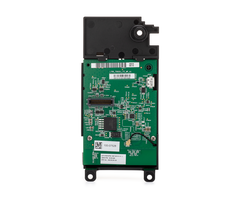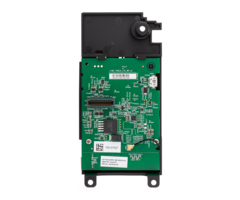What Is the Best Way to Monitor a Honeywell L5210?
The best way to monitor a Honeywell L5210 is by using an LTE cellular communicator. Cellular connectivity provides the most reliable communication for an L5210. Other options for monitoring include IP connectivity and telephone service. But cellular monitoring is by far the most reliable.

The communication path for an alarm system refers to how the panel communicates with a central monitoring station or other alarm monitoring servers, such as AlarmNet360. You want your panel to have a reliable communication path, as it is the only way to ensure that your panel can send and receive signals successfully. If the communication path for your panel goes down, then no alerts can be sent to you or a central station. This means that if a break-in, fire, or other emergency were to occur while you were away, then there is a good chance that nobody would find out about it until much later on.
For a Honeywell L5210, the two most commonly used communication paths are cellular communication and IP communication. Cellular communication represents the single most reliable communication path for any given alarm system. As long as your panel maintains an adequate cellular signal, you should almost never experience any downtime or service outages. The same cannot be said for IP monitoring, as internet outages are still fairly common. If you live in an area that is far away from any cell towers, then you might consider purchasing a cellular amplifier or a cellular antenna. Please note that many users will use both cellular and IP communication with their L5210 Systems. This is referred to as dual-path monitoring, and it is certainly possible, as long as you have all of the correct hardware. When using dual-path monitoring with an L5210, IP will serve as the main path, and cellular will be there as a backup in case the internet goes down.
In order to get started with cellular connectivity for an L5210 System, you will need to purchase a compatible cellular communicator. The two best options for a Honeywell L5210 are the Honeywell LTE-L57A (AT&T LTE) and the Honeywell LTE-L57V (Verizon LTE). With the impending 3G/4G Sunset, only LTE modules can be activated as of December 2019. Cellular service providers like AT&T and Verizon have publicly stated that their LTE networks will be supported for decades into the future. This makes an LTE communicator an excellent long-term investment for your security system. You just need to be aware that the L5210 needs Firmware Version 9.00.209 or higher to support the LTE-L57A, and Firmware Version 9.00201 to support the LTE-L57V. If you need to upgrade the firmware on your Honeywell L5210, then you can use the Honeywell LYNXTOUCH-MSD Firmware Updater Tool.
The only real downside to using cellular monitoring with an L5210 is that you need to pay for a cellular alarm monitoring plan. This will typically cost more than a monitoring plan that does not include cellular service. The reason why a cellular monitoring plan costs more is because your monitoring company has to pay fees to the cellular service provider that maintains the cellular network. For example, Alarm Grid customers can only use cellular monitoring if they have a Gold Level Plan or higher (self or full) or a Cellular-Only Plan. If you have a lower level plan (e.g. Silver or Bronze), then you will not be able to use a cellular communicator with your L5210 System. Paying the extra fees for cellular service is necessary if you want to provide your panel with the most reliable communication path possible.
If you are are trying to cut costs and are seeking a more affordable option, then you should know that IP-only connectivity is a possibility. But it is important to understand that an internet outage will take your system offline and leave your home or business unprotected until the connection is restored. In order to use IP monitoring with an L5210 System, you will need to add an L5100-WIFI Card. Your L5210 System will need to be running Firmware Version 8.00.183 or higher to support the newest versions of the L5100-WIFI. If your L5210 System needs a firmware upgrade, then you can use the Honeywell LYNXTOUCH-MSD Firmware Updater Tool we mentioned earlier to upgrade. Or you may to be able to find an older (used) version of the L5100-WIFI module that can be used with a LYNX Touch System on a lower firmware. For more information on the firmware requirements for the L5100-WIFI Module, please review this blog post.
Finally, it is possible to use a POTS (plain old telephone service) connection with an L5210. However, this is strongly discouraged. POTS represents an outdated and archaic technology. It is even less reliable than IP monitoring, and you will not save any money in monthly monitoring costs by choosing POTS over IP-only. You will also not be able to use Total Connect 2.0 if you use a POTS connection. For more information on using POTS with an L5210, please review this FAQ.
Did you find this answer useful?
We offer alarm monitoring as low as $10 / month
Click Here to Learn MoreRelated Products


- Answered
